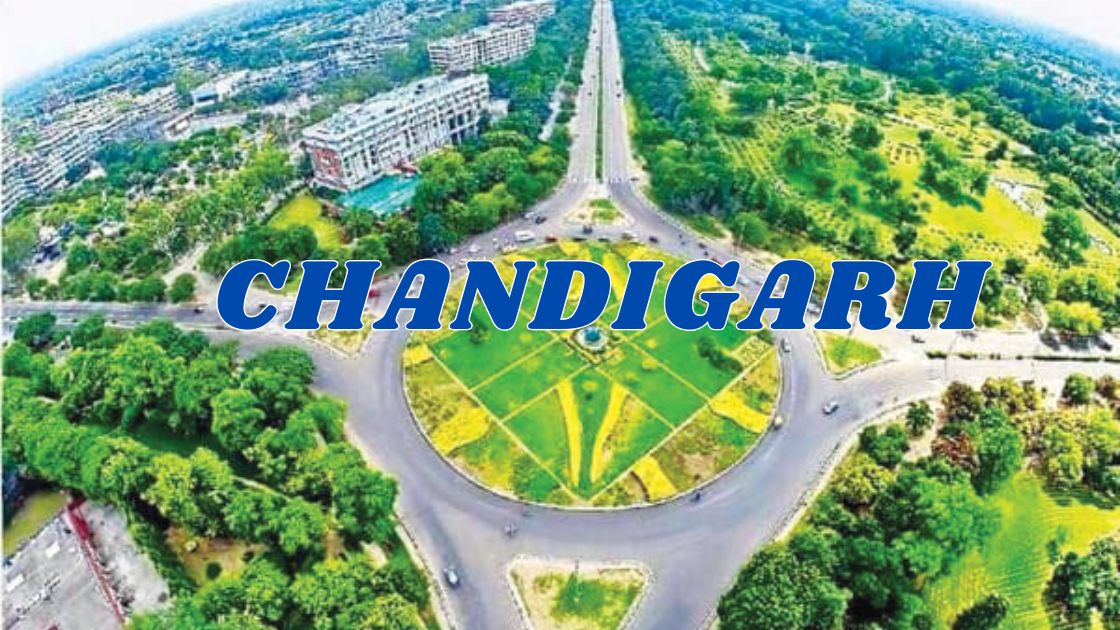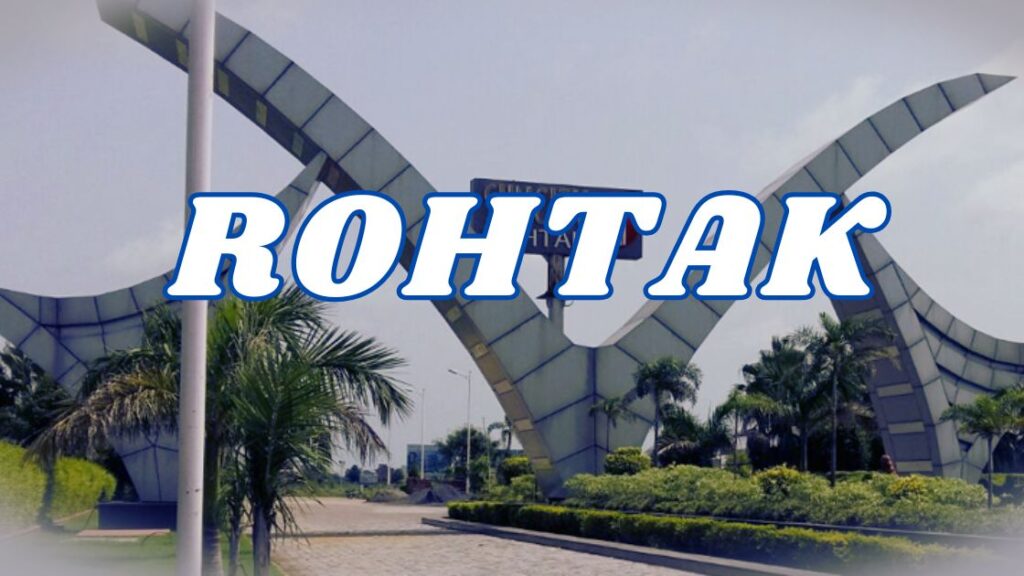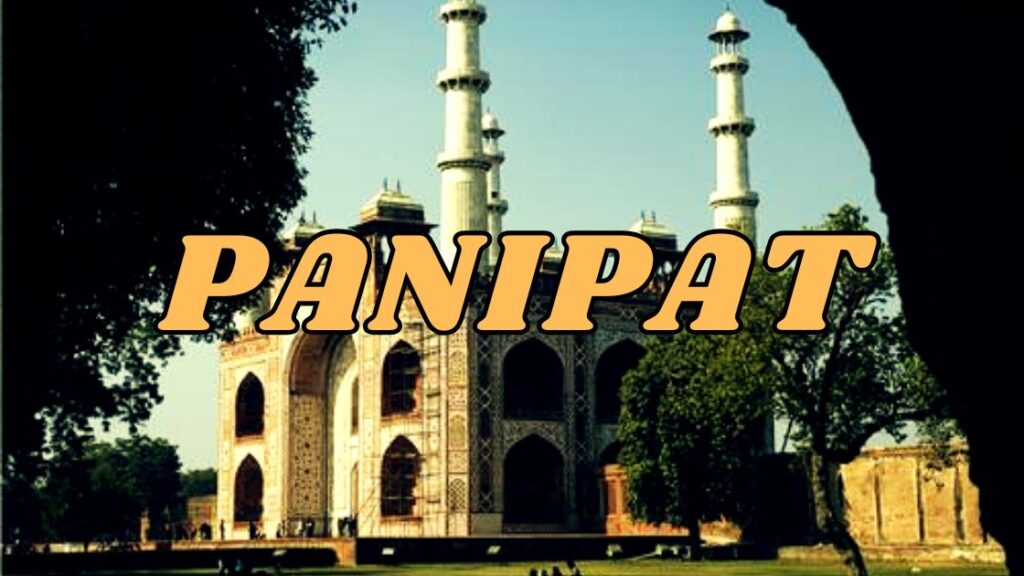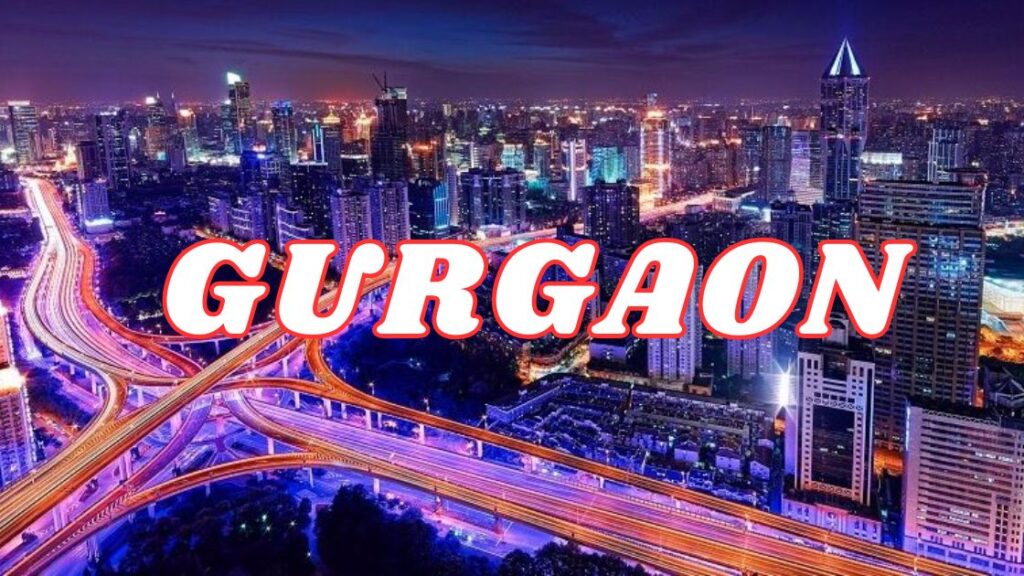Chandigarh is a union territory in northern India that serves as the shared capital of Punjab and Haryana. Nestled at the foothills of the Shivalik range of the Himalayas, it shares borders with Haryana on the east and Punjab on all other sides. Chandigarh is the core of the Chandigarh Capital Region (Greater Chandigarh), which includes the neighboring satellite cities of Panchkula (Haryana) and Mohali (Punjab). The city is strategically positioned 260 km northwest of New Delhi, 229 km southeast of Amritsar, and 104 km southwest of Shimla.
Chandigarh is one of the first planned cities in post-independence India and is renowned for its architecture and urban design on an international scale. The city’s master plan was developed by Swiss French architect Le Corbusier, who refined earlier designs by Polish architect Maciej Nowicki and American planner Albert Mayer. Many government buildings and residential areas were conceptualized by a team led by Le Corbusier, Jane Drew, and Maxwell Fry.
Chandigarh – A Modern Marvel of Architecture
A testament to its architectural significance, Chandigarh’s Capitol Complex was designated a UNESCO World Heritage Site during the 40th session of the World Heritage Conference in July 2016.
Over the years, Chandigarh has expanded beyond its original blueprint, contributing to the rapid development of Mohali and Panchkula. This tri-city metropolitan area now boasts a combined population of over 1.6 million. Chandigarh is one of India’s wealthiest cities, with one of the highest per capita incomes in the country.
Additionally, the union territory has a high Human Development Index (HDI), ranking among the best in India. According to a 2015 survey by LG Electronics, Chandigarh was declared India’s happiest city based on a happiness index. Furthermore, a BBC article from 2015 recognized Chandigarh as one of the few master-planned cities worldwide that successfully integrates monumental architecture, cultural growth, and modernization.
Etymology of Chandigarh
The name Chandigarh is derived from two Sanskrit words: “Chandi” and “Garh”. “Chandi” refers to Hindu goddess Chandi, while “Garh” means fortress. The city’s name originates from Chandi Mandir, an ancient temple dedicated to Goddess Chandi, located near the city in Panchkula District.
Chandigarh is often referred to as “The City Beautiful”, a title inspired by the City Beautiful movement—a popular urban planning philosophy in North America during the 1890s and early 1900s. Albert Mayer, the original planner of Chandigarh, admired this concept and once stated, “We want to create a beautiful city.”
The phrase “City Beautiful” was officially adopted as Chandigarh’s emblem in the 1970s and continues to be used in official publications and branding. Today, the city lives up to its name with its well-planned infrastructure, lush green spaces, and architectural elegance.
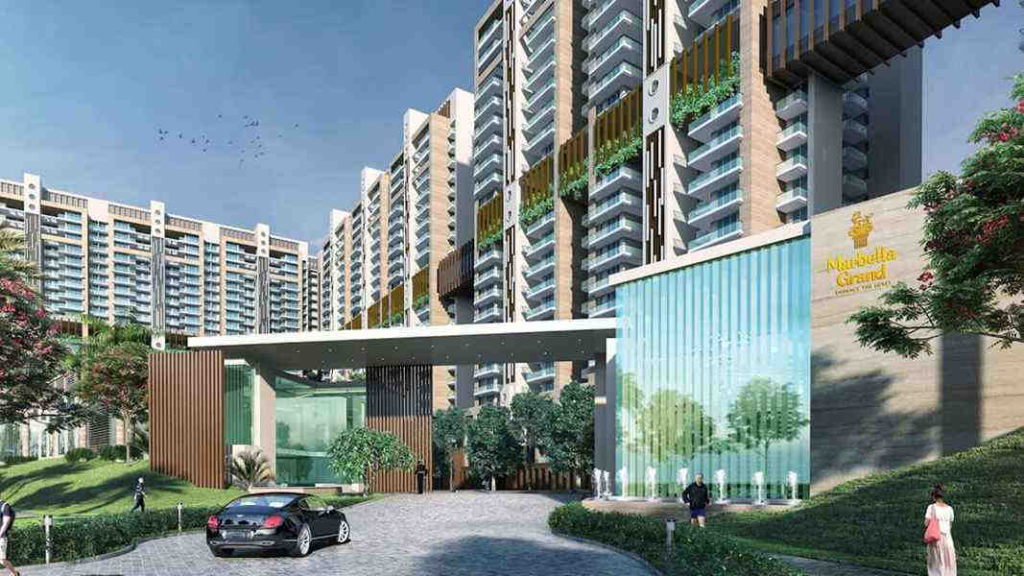
History of Chandigarh
Ancient and Pre-Colonial History
The area where Chandigarh stands today has a long history, dating back to the Indus Valley Civilization. Archaeological excavations in Sector 17 have revealed Indus Valley artefacts, indicating that the region was once home to one of the world’s earliest urban settlements. Additionally, nearby historical sites such as the Pinjore Gardens, a 17th-century Mughal Garden, highlight the region’s cultural and architectural legacy.
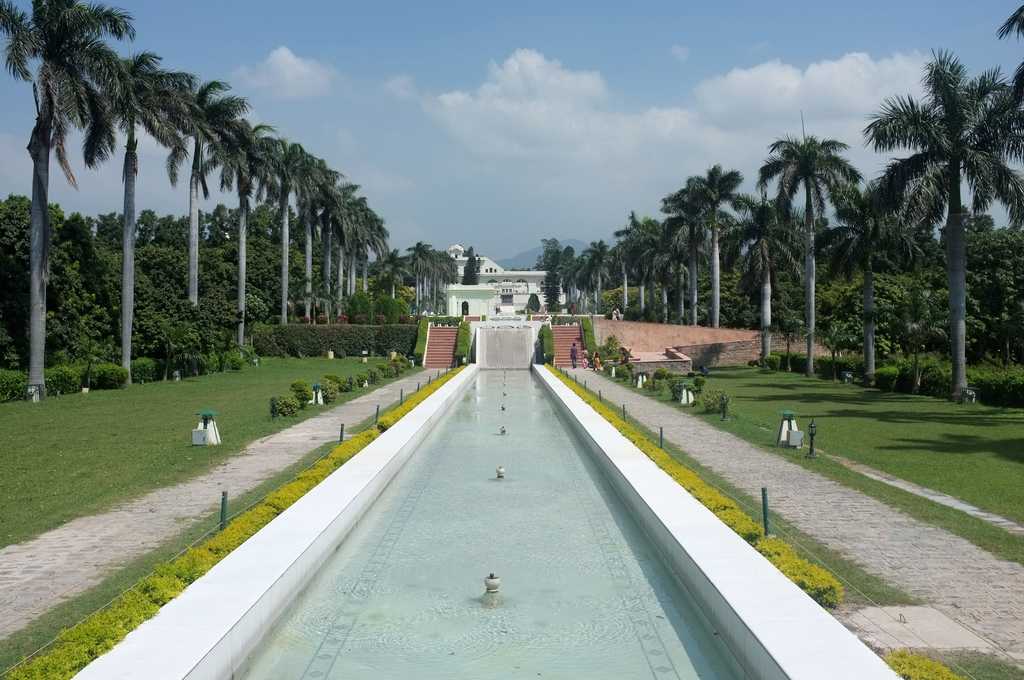
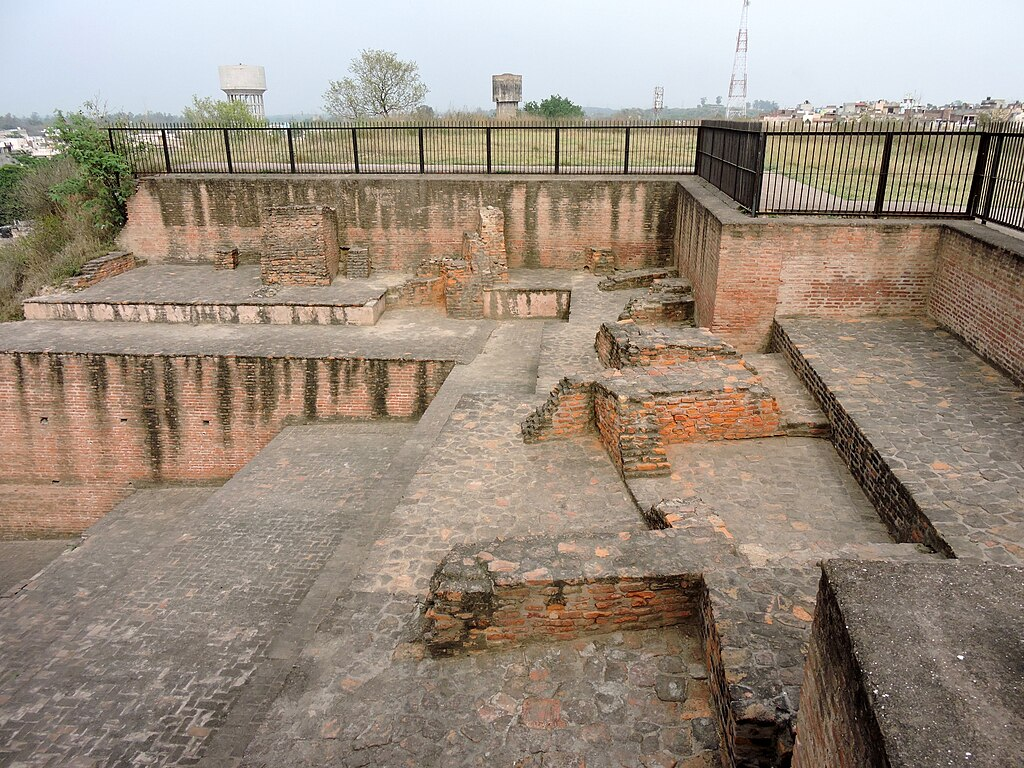
During the late 18th century, the region briefly housed a small principality with a fort at Mani Majra. Several pre-existing villages were absorbed into Chandigarh’s modern sectors, including Burail and Attawa, while some remain on the city’s outskirts.
Partition of India and the Need for a New Capital
Before 1947, Lahore was the capital of undivided Punjab. However, during the Partition of India, Punjab was split into West Punjab (Pakistan) and East Punjab (India) along the Radcliffe Line. With Lahore becoming part of Pakistan, India needed a new capital for East Punjab. Instead of selecting an existing city, Prime Minister Jawaharlal Nehru envisioned a modern, planned city that would symbolize India’s progress.
Leaders such as Partap Singh Kairon (Chief Minister of East Punjab) and Edward Nirmal Mangat Rai (Chief Secretary of East Punjab) played a pivotal role in selecting Chandigarh as the new capital. Shimla served as a temporary capital while the new city was being developed.
Planning and Development of Chandigarh
In 1949, American planner Albert Mayer was commissioned to design Chandigarh. His original plan focused on superblocks, green spaces, and cellular neighborhoods with efficient drainage. However, after the death of his partner Matthew Nowicki in a plane crash (1950), Mayer’s work was halted.
The Indian government then hired Swiss French architect Le Corbusier to redesign the city. He incorporated many aspects of Mayer’s original plan but introduced his own distinctive urban grid layout. Le Corbusier designed the Capitol Complex, which houses:
- High Court
- Palace of Assembly
- Secretariat Building
He also designed The Open Hand Monument, a 26-meter-high sculpture, symbolizing “peace and reconciliation”, representing a society open to giving and receiving.
Two planned monuments in the Capitol Complex—Geometric Hill and Martyrs’ Memorial—remain unfinished despite construction beginning in 1956.
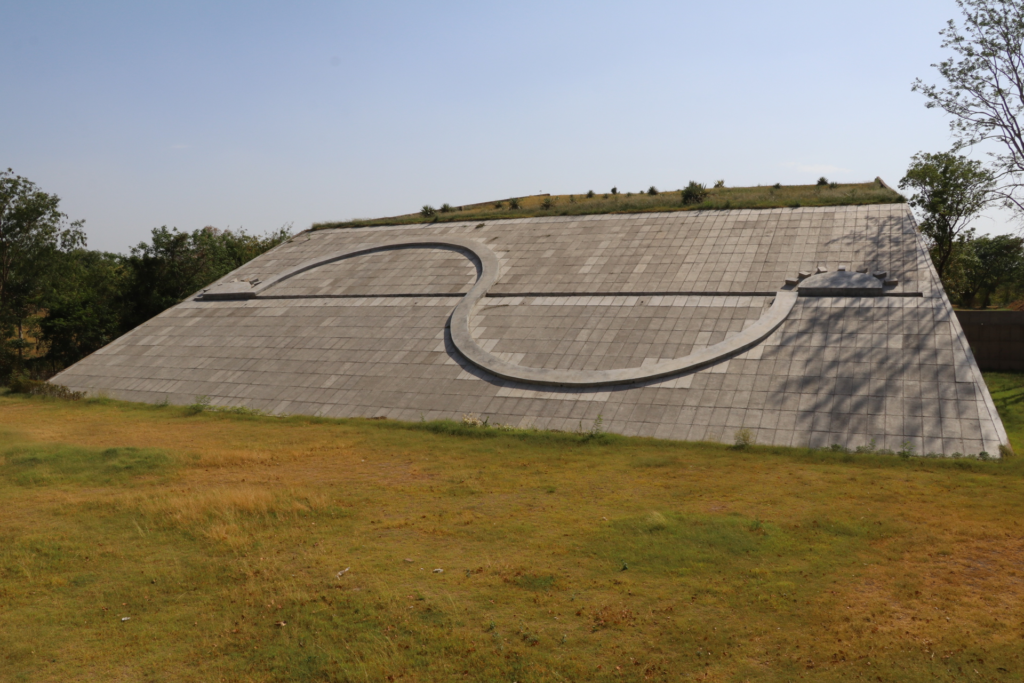
Chandigarh Becomes the Capital
On 21 September 1953, the capital of Punjab officially shifted from Shimla to Chandigarh. A few weeks later, on 7 October 1953, Dr. Rajendra Prasad, India’s first President, formally inaugurated the city.
Formation of Haryana and Chandigarh’s Union Territory Status
Following years of demands for a Punjabi-speaking state, Punjab was reorganized on 1 November 1966. The western and northern regions remained Punjab, while the eastern and southern parts (where Hindi and Haryanvi were spoken) became the new state of Haryana.
Since Chandigarh was located on the border of both states, both Punjab and Haryana claimed it as their capital. However, instead of assigning Chandigarh to either state, the Indian government declared Chandigarh a Union Territory, to serve as the shared capital of both Punjab and Haryana.
The dispute over Chandigarh’s ownership continues, with Punjab insisting that the city rightfully belongs to it, while Haryana has demanded a separate capital. Economic concerns have also played a role, with industrialists claiming that any new rival city could impact Chandigarh’s status and real estate development.
Geography
Location
Chandigarh is strategically located at the foothills of the Shivalik Range of the Himalayas in northwest India. It spans an area of approximately 114 km² and shares its borders with the states of Punjab and Haryana. The city’s exact geographical coordinates are 30.74°N latitude and 76.79°E longitude, with an average elevation of 321 meters (1,053 feet) above sea level.
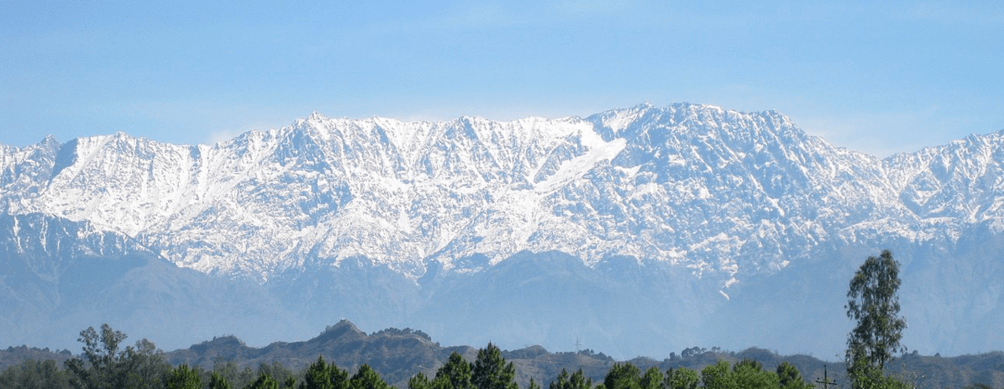
Situated in the northern plains, Chandigarh encompasses vast stretches of flat and fertile land. The northeastern part of the city includes Bhabar terrain, while the rest falls within the Terai region. Chandigarh is surrounded by significant cities such as Mohali, New Chandigarh, Patiala, Zarapkar, and Rupnagar in Punjab and Panchkula and Ambala in Haryana.
The city is located 44 km (28 miles) north of Ambala, 229 km (143 miles) southeast of Amritsar, and 250 km (156 miles) north of Delhi.
Climate
Chandigarh has a humid subtropical climate (Koppen: Cwa), characterized by hot summers, mild winters, variable rainfall, and significant temperature variations. The temperature in the city ranges from -1°C (30.2°F) to 45°C (113.0°F). The city receives an average annual rainfall of 1,110.7 mm (43.73 inches), influenced by Western Disturbances from the Mediterranean Sea, which bring rain, especially between mid-December and April. During this time, strong winds and occasional hailstorms can damage crops.
Chandigarh experiences the following seasons:
- Spring (February-end to mid-April): Temperatures range between 13°C and 20°C (55.4°F to 68.0°F) during the day and 5°C to 12°C (41.0°F to 53.6°F) at night.
- Autumn (September-end to mid-November): The temperature can reach 30°C (86°F) during the day, while it remains between 10°C and 22°C (50.0°F to 71.6°F) at night.
- Summer (mid-April to mid-June): The temperature peaks at 43°C (109.4°F) in June, with an average between 38°C and 42°C (100.4°F to 107.6°F).
- Monsoon (mid-June to mid-September): Chandigarh experiences moderate to heavy rainfall, mainly in August and September, with monsoon winds coming from the southwest/southeast.
- Winter (November-end to February-end): Temperatures generally range between 5°C and 14°C (41.0°F to 57.2°F) during the day and -1°C to 5°C (30.2°F to 41.0°F) at night. Western disturbances bring occasional rainfall and hailstorms.
Chandigarh has been ranked 27th among India’s “National Clean Air Cities” (Category 1, Population >10L).
Wildlife and Biodiversity
A significant part of Chandigarh is covered by dense forests with banyan and eucalyptus plantations. Other trees such as Ashoka, cassia, and mulberry thrive in the city’s green ecosystem. The surrounding forests serve as habitats for various flora and fauna.
Chandigarh’s wildlife includes species such as deer, sambars, barking deer, parrots, woodpeckers, and peacocks. Sukhna Lake attracts migratory birds from Siberia and Japan during winter, making it an essential bird-watching spot. The Parrot Bird Sanctuary Chandigarh is home to numerous parrots, while the Sukhna Wildlife Sanctuary, declared in 1998, protects a diverse range of wildlife.
Some notable wildlife species in Chandigarh include:
- Junglefowl in Sukhna Wildlife Sanctuary
- Sambar deer in City Forest Park
- Parakeets at the Parrot Bird Sanctuary
- Nilgai (Blue Bull) near Dhanas Lake
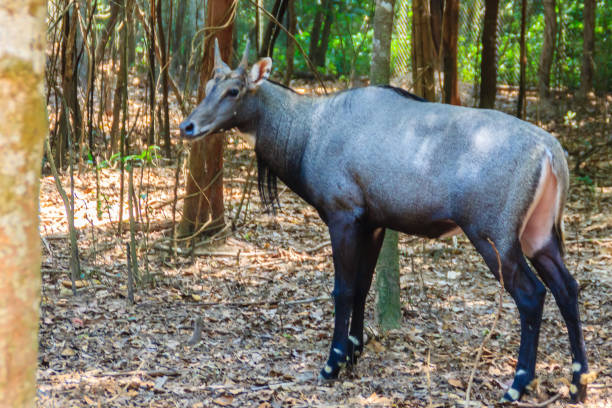
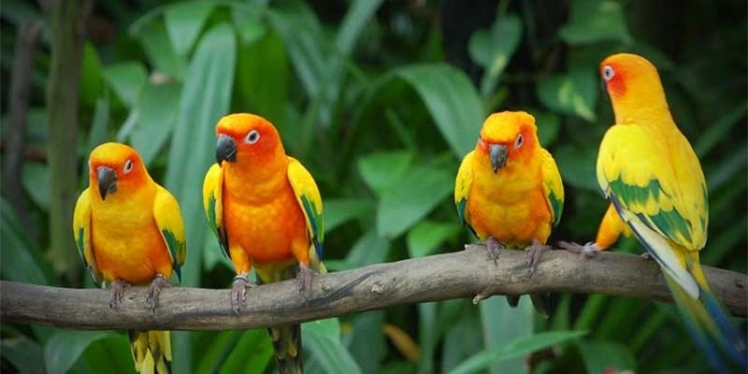
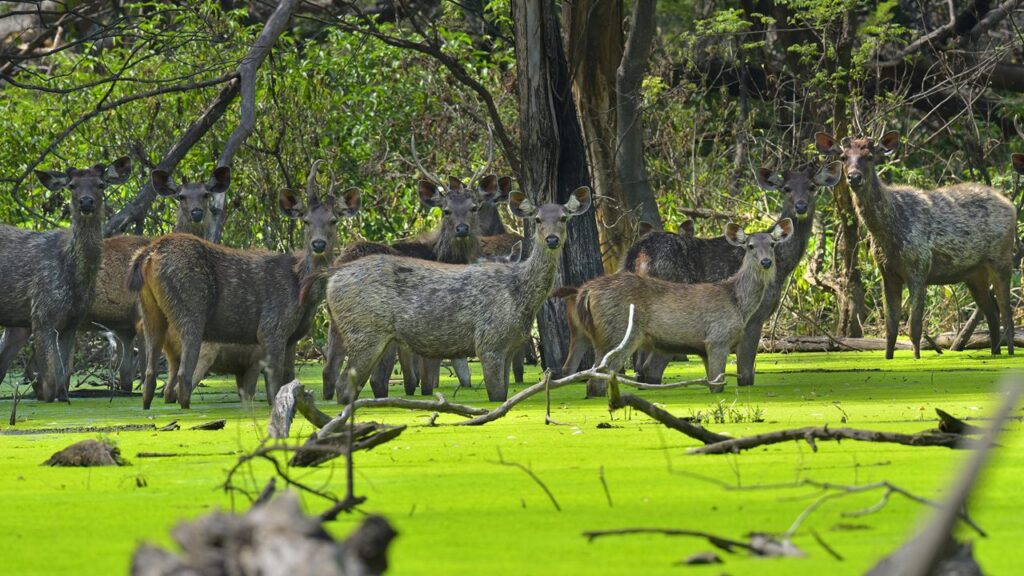
The city’s biodiversity and forest reserves play a crucial role in maintaining ecological balance and providing a habitat for numerous species.
Heritage Trees of Chandigarh
Chandigarh is home to several trees that have been recognized as part of the city’s natural heritage. The Chandigarh government has identified 31 trees as Heritage Trees, which are at least 100 years old. The Department of Forest & Wildlife, Chandigarh Administration, is responsible for preserving these trees and has published a detailed booklet on them.
Landscape of Chandigarh
One of the most iconic landmarks of Chandigarh is Sukhna Lake, a 3 km² artificial rain-fed lake located in Sector 1. Created in 1958 by damming the Sukhna Choe, a seasonal stream originating from the Shivalik Hills, this lake has become a popular destination for locals and tourists alike.
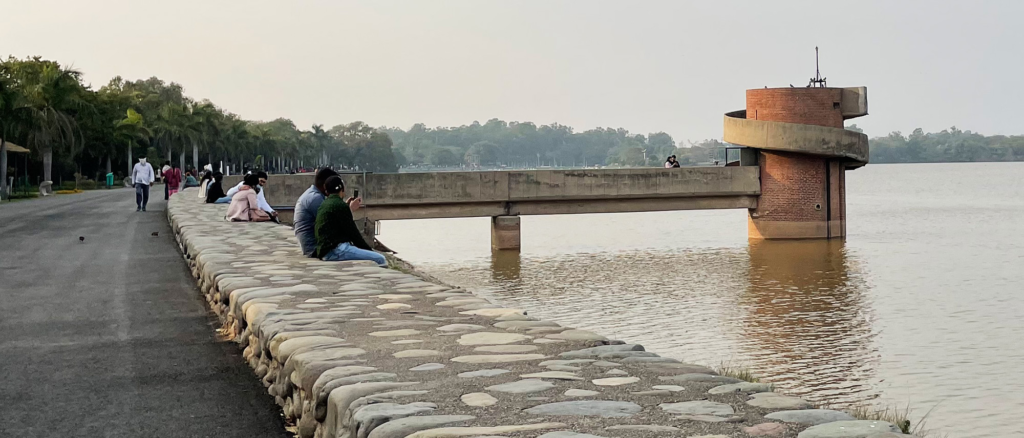
Parks and Gardens
Chandigarh is known for its extensive green belts and beautifully maintained parks, making it one of the greenest cities in India. Some of the most famous parks and gardens include:
- Garden of Silence – Located within Sukhna Lake, this peaceful spot is a major attraction.
- Rock Garden – A unique sculpture garden featuring artwork created from recycled waste materials.
- Zakir Hussain Rose Garden – Asia’s largest rose garden, housing nearly 825 varieties of roses and over 32,500 varieties of medicinal plants and trees.
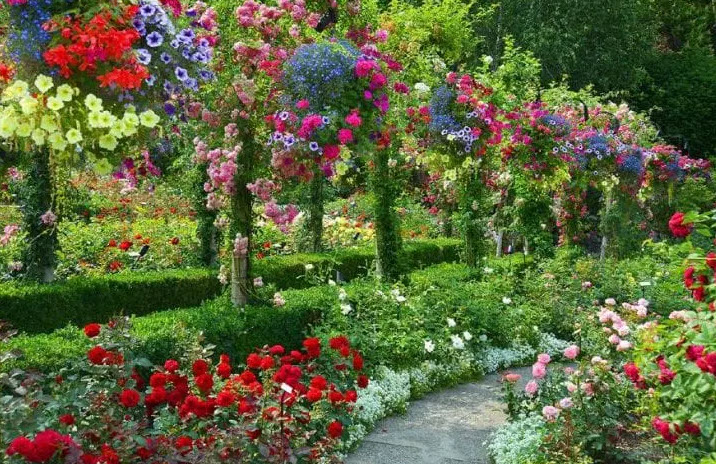
- Garden of Fragrance (Sector 36) – Famous for its aromatic flowers.
- Garden of Palms (Sector 42) – Home to a variety of palm trees.
- Butterfly Park (Sector 26) – A dedicated area for butterflies with lush greenery.
- Valley of Animals (Sector 49) – Features animal-themed sculptures and greenery.
- Japanese Garden (Sector 31) – A park inspired by Japanese architecture.
- Terraced Garden (Sector 33) – Known for its terraced flower beds and seasonal blooms.
- Shanti Kunj Garden – A peaceful retreat with natural streams running through it.
- Botanical Garden – Houses a vast collection of medicinal and exotic plants.
- Bougainvillea Garden – A garden dedicated to various species of bougainvillea plants.
In addition to these parks, Chandigarh is home to the Government Museum and Art Gallery in Sector 10, which showcases a collection of art and historical artifacts.
Demographics of Chandigarh
Historical Population Growth
Chandigarh’s population has seen significant growth over the decades, especially after its establishment as a planned city. Below is the historical population trend:
- 1901: 21,967
- 1951: 24,261
- 1961: 119,881 (+394.13% growth in a decade)
- 2011: 1,055,450 (density of 9,252 persons per square kilometer)
As per the 2011 Census of India, Chandigarh had a population of 1,055,450, marking a 17.10% growth from 2001. However, this is a decline compared to previous decades due to urbanization in neighboring cities.
Gender and Literacy Rate
- Males: 55% | Females: 45%
- Sex Ratio: 818 females per 1,000 males
- Child-Sex Ratio: 880 females per 1,000 males
- Literacy Rate:86.77% (higher than the national average)
- Male Literacy: 90.81%
- Female Literacy: 81.88%
Urban and Rural Population
- 97.25% of Chandigarh’s population lives in urban areas, while only 2.75% resides in rural villages, primarily on the Western and Southeastern borders of the city.
Languages Spoken in Chandigarh
Chandigarh is a multilingual city, with English as the sole official language. According to the 2011 Census, the primary languages spoken are:
- Hindi: 67.76%
- Punjabi: 22.02%
- Bhojpuri: 2.27%
- Haryanvi: 1.06%
- Urdu: 1.00%
- Others (including Bengali, Tamil, Pahari, and Nepali): 5.89%
Over time, the percentage of Punjabi speakers has declined from 36% in 1981 to 22% in 2011, while Hindi speakers have increased from 51% to 67.76%. Government schools in Chandigarh use English, Hindi, and Punjabi textbooks for education.
Religion in Chandigarh
Chandigarh is predominantly a Hindu-majority city, with Sikhism being the second most practiced religion. The religious composition as per the 2011 Census is:
- Hinduism: 80.71%
- Sikhism: 13.11%
- Islam: 4.87%
- Christianity: 0.83%
- Others (Jainism, Buddhism, etc.): 0.4%
Major religious sites in Chandigarh:
- Mata Basanti Devi Mandir (Sector 24) – Dedicated to Goddess Shitala, attracting devotees, especially on Chaitra Tuesdays.
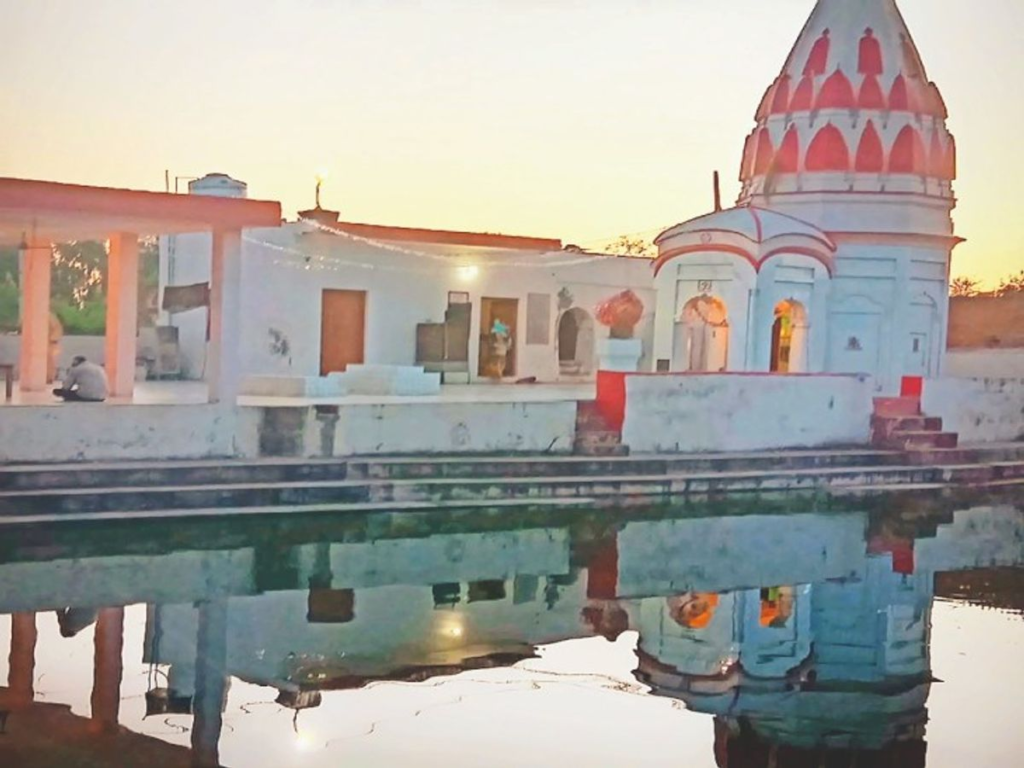
- Chandi Mandir, Mata Mansa Devi Mandir, and Mata Jayanti Devi Mandir – Prominent Hindu temples in and around Chandigarh.
- Nada Sahib Gurudwara – One of the most significant Sikh worship sites near Chandigarh.
- Historical Mosques in Manimajra and Burail – Important places of Islamic worship.
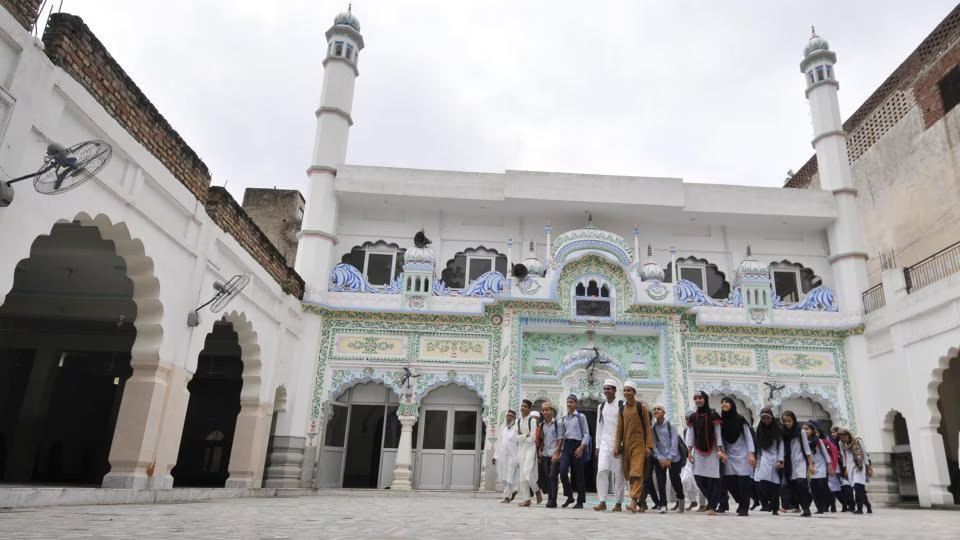
- Co-Cathedral in Chandigarh – Serves the Catholic community under the Diocese of Simla and Chandigarh.
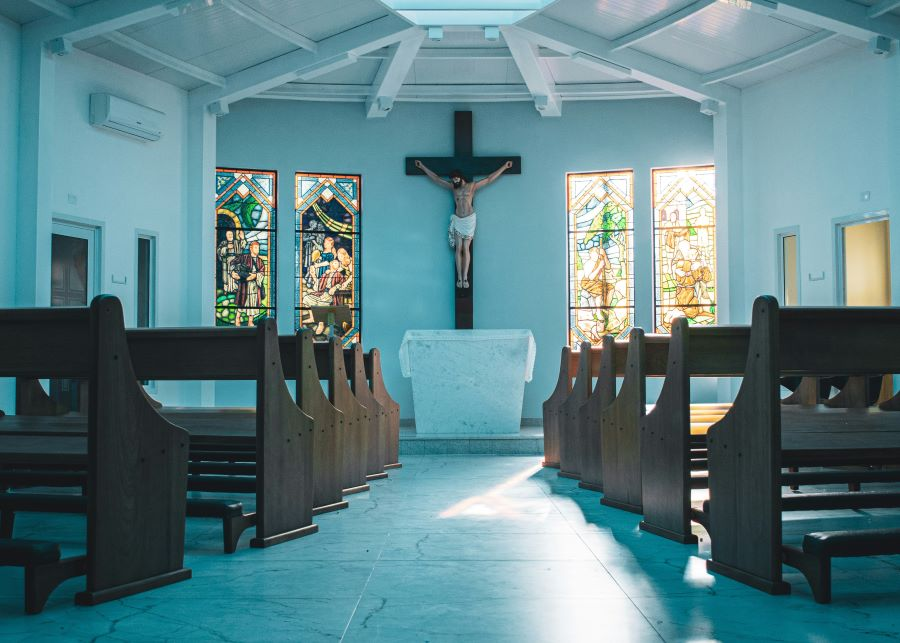
Health & Nutrition in Chandigarh
Children’s Nutrition (2020 Data)
- Stunted (short for age): 25% (down from 29% in 2016)
- Wasted (low weight for height): 8% (down from 11% in 2016)
- Underweight: 21% (down from 24% in 2016)
- Anemia among children: 55% (down from 73% in 2016)
Women’s Health (Aged 15–49 years, 2020 Data)
- Underweight (BMI < 18.5): 13%
- Overweight/Obesity: 44% (increase from 41% in 2016)
- Hypertension: 25% (doubled from 12% in 2016)
- Diabetes: 29%
- Anemia (Non-Pregnant Women): 60% (reduced from 76% in 2016)
Government and Politics in Chandigarh: Administration, Politics, and Civic Governance
Chandigarh, a Union Territory, is a unique region in India that is not governed by a state-level government, but rather directly by the Central Government. This distinction shapes the political and administrative framework of the city, with significant implications for its governance, political representation, and civic administration.
Administrator of the Union Territory
According to Article 239 of the Constitution of India, the administration of Union Territories is carried out by the President of India through an appointed administrator. In the case of Chandigarh, since 1984, the Governor of Punjab has served as the administrator of the Union Territory, a role that aligns with both positions. As of July 27, 2024, Gulab Chand Kataria has been the appointed administrator of Chandigarh. The role of the administrator is crucial, as they manage the city’s affairs in coordination with the central government, ensuring that local administration aligns with national policies and strategies.
Political Landscape of Chandigarh
Unlike other regions in India, Chandigarh does not hold state-level elections. This is because it is not a full-fledged state but a Union Territory, and thus it falls under direct control of the central government. As a result, the city does not have a State Assembly, and its political representation is limited to a single seat in the Lok Sabha, which is allocated for Chandigarh in the general elections held every five years.
In the 2024 Lok Sabha elections, Manish Tewari, a representative of the Indian National Congress (INC), was elected to represent Chandigarh. His victory reflects the continuing political dynamics and influence of national parties in the Union Territory, despite its unique status as a Union Territory without a legislative assembly.
Civic Administration of Chandigarh
Chandigarh’s local governance is structured through the Chandigarh Municipal Corporation (CMC), which serves as the city’s civic administration body. The CMC is led by two key figures: Anindita Mitra, the Municipal Commissioner, and Sarbjit Kaur, the Mayor. The governance structure consists of 35 wards, each represented by an elected councillor. Additionally, the city also nominates 9 councillors to represent various sectors, ensuring diverse representation within the local governance system.
In the 2021 Chandigarh Municipal Corporation elections, the political landscape saw significant shifts. The Aam Aadmi Party (AAP) made impressive gains, securing 14 seats, an increase of 14 from the previous term. Meanwhile, the Bharatiya Janata Party (BJP) experienced a loss, reducing its representation by 6 seats, holding 14 seats. The Indian National Congress (INC) saw a growth of 3 seats, bringing its total to 6, while the Shiromani Akali Dal (SAD) retained a single seat. The remaining 9 seats are reserved for nominated councillors, a practice designed to balance the representation across various interests and sectors in the city.
Significant Administrative Changes and Criticism
In a major administrative move announced on March 27, 2022, Union Home Minister Amit Shah declared that Chandigarh’s employees who were previously governed under Punjab service rules would now work under the Central Civil Services Rules, effective from April 1, 2022. This decision was met with criticism from several political parties, including Aam Aadmi Party (AAP), Indian National Congress (INC), and Shiromani Akali Dal (SAD), who argued that this change undermined the autonomy of the Union Territory and had potential implications for the rights and welfare of its employees. Critics argue that such changes may create dissatisfaction among the local workforce, as it shifts the governance model from state-based policies to more centralized federal regulate.
Civic Utilities and Infrastructure in Chandigarh
Chandigarh, known for its modern urban design and well-planned layout, faces several challenges in maintaining its civic utilities and infrastructure. The city’s Municipal Corporation plays a pivotal role in managing essential services such as sanitation, water supply, sewerage, and parking. Over the years, changes in tariffs, infrastructural upgrades, and public grievances have shaped the city’s civic landscape.
Role of the Municipal Corporation
The Municipal Corporation Chandigarh (MCC) is responsible for ensuring the city’s cleanliness, maintaining parks, managing street lighting, and overseeing sewage disposal systems. One of its primary tasks is to ensure a clean and sanitary environment for residents, which includes waste management and public health initiatives. The city’s sewerage system has been in place for several decades, initially laid out in four phases. However, recognizing the growing needs of the population, the municipal body announced in September 2020 that it would upgrade and modernize the 50-year-old sewerage system, which had become outdated and inadequate for the city’s increasing urban demands.
Water Supply and Tariff Concerns
Water supply remains a significant concern for Chandigarh’s residents, particularly in light of rising demand and increasing population. In May 2021, a pilot project aimed at providing 24×7 water supply was scheduled to begin. The initiative, which was initially set to start in September 2020 and complete by March 2022, has seen delays. As of April 2021, the decision was still pending with the Chandigarh Smart City Ltd (CSCL) board, leaving many residents in uncertainty.
Water tariffs also became a contentious issue in 2021, when the BJP-led Municipal Corporation increased the rates by 1.5 to 2.5 times. This hike sparked widespread discontent among residents, many of whom found the increase to be an additional financial burden during challenging times. These tariff changes, along with increases in property taxes, waste collection charges, and parking fees, have caused significant dissatisfaction, especially when combined with other ongoing infrastructural issues.
Parking and Waste Management Challenges
Parking is another major concern in Chandigarh, exacerbated by an acute shortage of parking spaces across the city. With an increase in the number of vehicles, the demand for parking has outstripped available spaces. The Municipal Corporation aggravated the situation in 2021 by raising parking rates by 17%, further frustrating residents.
At the same time, waste management in the city has faced its own set of challenges. The garbage collection and disposal system has struggled with inefficiencies, as evidenced by the growing pile-up of waste at the Dadu Majra garbage dump site. The city’s cleanliness, which had once been a source of pride, suffered a significant decline in 2021, dropping 66 positions in the rankings of India’s cleanest cities. This decline became a central issue during local elections and raised concerns among the public regarding the effectiveness of the municipal body’s waste management practices.
Public Response and Criticism
The rise in tariffs and the deterioration in cleanliness led to widespread public dissatisfaction, which was particularly apparent during the COVID-19 pandemic. During this challenging period, concerns were raised about the adequacy of relief measures taken by the local government. Many residents felt that the sitting councillors were not approachable and lacked the necessary support during a critical time when the community needed it the most.
The failure to address public grievances regarding increased service charges and poor cleanliness led to growing criticism of the Municipal Corporation. The city’s once-sterling reputation for cleanliness, including being ranked the second-cleanest city in India in 2016, was tarnished as the deterioration in waste management practices took center stage in political discourse.
Economy of Chandigarh: A Thriving Hub of Growth and Opportunities
Chandigarh, often recognized as one of the wealthiest towns in India, has a thriving economy supported by a mix of government employment, business, and industrial sectors. The city’s unique blend of urban planning, technological advancements, and service sector growth makes it one of the most prosperous and well-developed regions in the country.
Chandigarh’s Economic Strength
Chandigarh has consistently been ranked as one of the richest cities in India. According to data from the Reserve Bank of India, the city stands out as the third-largest deposit centre and the seventh-largest credit centre in India as of June 2012. The average monthly household income in Chandigarh is ₹199,000 (approximately $2,300), placing it among the highest in the nation. The city’s gross state domestic product (GSDP) for the fiscal year 2014–15 was estimated at ₹290 billion, with the figure expected to reach ₹440 billion (around $5.1 billion) in 2023.
Chandigarh’s emergence as an economic powerhouse is largely attributed to its role as a hub for outsourcing and IT services. A 2014 survey ranked Chandigarh 4th in the list of top 50 cities globally for emerging outsourcing and IT services destinations, ahead of cities like Beldon (Amritsar). This places Chandigarh on the international map as a growing center for business and innovation.
Technological Advancements and the IT Sector
One of the key drivers of Chandigarh’s economy is its Rajiv Gandhi Chandigarh Technology Park, also known as the Chandigarh IT Park. This special economic zone has provided a fertile ground for the growth of the information technology (IT) sector, facilitating the rise of technology businesses and services. The park has played a crucial role in shifting the economic focus of the city from traditional industries to the dynamic and fast-growing services sector, particularly IT and software development.
The presence of major Indian IT firms like Infosys, Tech Mahindra, and Quark, along with multinational corporations such as Airtel, Amadeus IT Group, and DLF, has solidified the city’s reputation as an emerging IT destination. These companies are drawn to Chandigarh’s strategic location, excellent infrastructure, and access to a highly skilled talent pool. The park has successfully positioned the city as a key player in the Indian IT landscape, with continued investment expected in the coming years.
Government Employment and Industries
The government is a major employer in Chandigarh, with several administrative bodies based in the city, including the Chandigarh Administration, and the Punjab and Haryana Governments. This has led to a significant portion of the population being employed by government institutions or having retired from government service, particularly from the armed forces. As a result, Chandigarh is sometimes referred to as a “Pensioner’s Paradise” due to its large pensioner base.
The city also hosts the Ordnance Cable Factory of the Ordnance Factories Board, along with numerous medium-to-large industries, including paper manufacturing, metals and alloys, and machinery production. Other key sectors include food products, sanitary ware, auto parts, pharmaceuticals, and electrical appliances. Additionally, over 2,500 small-scale industrial units are registered in Chandigarh, contributing significantly to the economy.
Chandigarh’s status as an economic center is further boosted by its growing trade and business sectors. The city’s proximity to key regions like Delhi, Haryana, Punjab, and Himachal Pradesh allows it to act as a vital commercial hub for these states. In addition, the presence of four major trade promotion organizations, including ASSOCHAM India, FICCI, and CII, has bolstered its position as a focal point for business and industry in northern India.
Chandigarh Metro and Future Developments
In terms of transportation infrastructure, the Chandigarh Metro was proposed to begin work in 2019 but faced significant opposition, particularly from the Member of Parliament, Kirron Kher. The project, estimated to cost ₹109 billion, was designed to improve the city’s public transportation network, with partial funding from the Punjab, Haryana, and Chandigarh Governments as well as the Japanese Government. However, the project was ultimately deemed non-feasible and rejected.
Instead, Kher proposed the creation of a Film City in Sarangpur, Chandigarh, which has been accepted by the Chandigarh Administration. This development is expected to generate significant employment opportunities in the creative and entertainment sectors, further diversifying the city’s economy.
A Promising Economic Future
Chandigarh’s economy is characterized by a robust mix of government employment, thriving industries, and a growing focus on the IT and services sector. With its strategic location, excellent infrastructure, and a business-friendly environment, the city is well-positioned for future growth. Although challenges such as the failure of the metro project and public dissatisfaction with rising costs persist, the economic prospects for Chandigarh remain bright. The development of sectors like IT, film, and trade, alongside a well-rounded industrial base, positions Chandigarh as one of India’s most dynamic and prosperous urban economies.
Culture of Chandigarh: A Vibrant Fusion of Traditions and Modernity
Chandigarh, known for its unique blend of urban planning and natural beauty, also boasts a rich and diverse cultural landscape. The city’s cultural scene is marked by a vibrant mix of festivals, artistic expressions, and traditional celebrations, all of which contribute to its charm. From traditional Punjabi festivals to contemporary cultural events, Chandigarh offers a melting pot of experiences that reflect its evolving identity.
Festivals in Chandigarh: A Celebration of Tradition and Unity
Chandigarh hosts numerous festivals throughout the year, showcasing the city’s deep-rooted cultural heritage and modern spirit. Among the most prominent events is Navratri, celebrated with great zeal during September or October. This Hindu festival, dedicated to the worship of Goddess Durga, sees many associations and organizations in the city organizing Ramlila performances. The tradition of Ramlila, a dramatic retelling of the life of Lord Rama, has been held in Chandigarh for over 50 years, making it a significant cultural event.
Another major event is the Rose Festival, held every year in February at the Zakir Hussain Rose Garden. This festival is a visual treat, attracting thousands of visitors who come to admire the stunning display of roses. The garden features an impressive array of rose species, along with other plants and flowers, making it a haven for nature lovers and photography enthusiasts alike. This festival not only highlights the city’s love for nature but also symbolizes the spirit of renewal and beauty.
Chandigarh Carnival: A Mega Tourism Event
One of the most anticipated events in Chandigarh is the Chandigarh Carnival, which takes place every year in the last week of November. Organized by the Chandigarh Administration, this annual event draws both locals and tourists. The carnival is a celebration of the city’s diverse culture and its growing importance as a tourist destination. It features a series of fun-filled activities, including an amusement park, cultural performances, and various food stalls. The carnival is a delightful mix of traditional and modern cultural expressions, making it a must-attend event for anyone visiting the city.
Mango Festival: A Taste of Summer
Chandigarh also celebrates the Mango Festival during the monsoon season, a tribute to the king of fruits, the mango. The festival is held at different venues, offering a variety of mangoes for sale, along with mango-based food items and cultural performances. The event is an ode to the agricultural roots of the region and reflects the city’s appreciation for local produce and seasonal delicacies.
Celebrating Punjabi Festivals with Enthusiasm
Chandigarh, being in the heart of Punjab, also takes pride in celebrating several Punjabi festivals with fervor. Lohri, Basant, and Vaisakhi are some of the major festivals celebrated across the city. Lohri, a festival marking the harvest season, is celebrated with bonfires, folk music, and traditional dances like Bhangra and Gidda. Basant, the festival of kites, is marked by a burst of colors in the sky as locals indulge in kite flying, a popular activity during this time. Vaisakhi, celebrated in April, is another important festival, especially for Sikhs, as it marks the harvest season and the founding of the Khalsa.
The city’s cultural celebrations are not limited to these major festivals alone. Sukhna Lake, one of Chandigarh’s most scenic locations, becomes a hub for a variety of cultural events and festivals, providing a picturesque backdrop to celebrations. These festivals are not just limited to religious observances but also focus on community bonding and the expression of local art, food, and music.
The Arts Scene: Preserving and Promoting Cultural Heritage
Chandigarh’s cultural vibrancy is also reflected in its commitment to the fine arts. The city is home to the Fine Arts Museum at Panjab University, which houses an impressive collection of traditional and contemporary works of art. The museum serves as a space for cultural expression and provides a platform for local artists to showcase their talents. Chandigarh’s commitment to promoting arts and culture is also evident in its numerous art galleries, theaters, and cultural centers, where performances and exhibitions are held throughout the year.
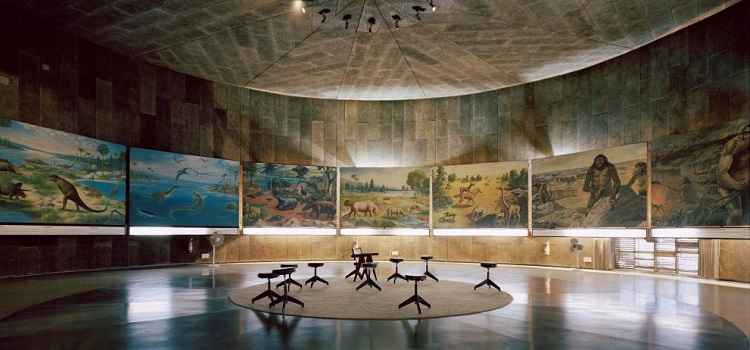
Transport in Chandigarh: Efficient Connectivity for a Growing City
Chandigarh, known for its meticulous urban planning and modern infrastructure, has made substantial efforts to develop a comprehensive and efficient transportation system. With a growing population and increasing urbanization, the city has adopted innovative measures to enhance its transport network, ensuring smooth mobility for its residents and visitors.
Unified Transport Metropolitan Authority (UTMA)
In 2023, the Unified Transport Metropolitan Authority (UTMA) was established to plan and execute the transportation needs of the Chandigarh Metropolitan Region. This body is responsible for addressing the region’s growing transportation demands and formulating long-term strategies to ensure sustainable and efficient urban transport. UTMA’s creation highlights the city’s commitment to managing its transportation infrastructure in a systematic manner.
Road Transport: Smooth Connectivity and Local Convenience
Chandigarh’s well-maintained roads and efficient parking systems make commuting within the city hassle-free. The city has the largest number of vehicles per capita in India, which reflects its urbanization and growing middle class. The well-planned road network consists of wide roads with minimal traffic congestion, making it easy to navigate through different sectors of the city.
The Chandigarh Transport Undertaking (CTU) operates the public transport bus system from its Inter-State Bus Terminals (ISBT) located in Sectors 17 and 43. These buses provide seamless connectivity to nearby regions, including states like Punjab, Haryana, Himachal Pradesh, and Delhi. The efficient bus services are a popular choice for commuters, offering frequent departures and reliable routes.
Chandigarh is connected to other cities in the region via major highways, providing easy access for travelers and facilitating trade and business. Some important highways that link Chandigarh to nearby cities include:
- NH 7: Leading to Patiala in the southwest.
- NH 152: Connecting to Ambala and Kaithal in the south (with further connectivity to Delhi via NH 44).
- NH 5: Heading toward Shimla in the northeast and Ludhiana in the west.
These highways ensure that Chandigarh is well-connected to neighboring towns and cities, making it an important transport hub in northern India.
Air Transport: Expanding Connectivity
The Chandigarh International Airport, located in Mohali, has emerged as a key gateway for both domestic and international travelers. The airport serves scheduled commercial flights to major cities in India and has been expanding its international connections since the completion of the international terminal in 2015. The runway is located in Chandigarh, while the terminal is situated in Mohali, making it a shared facility between the two cities.
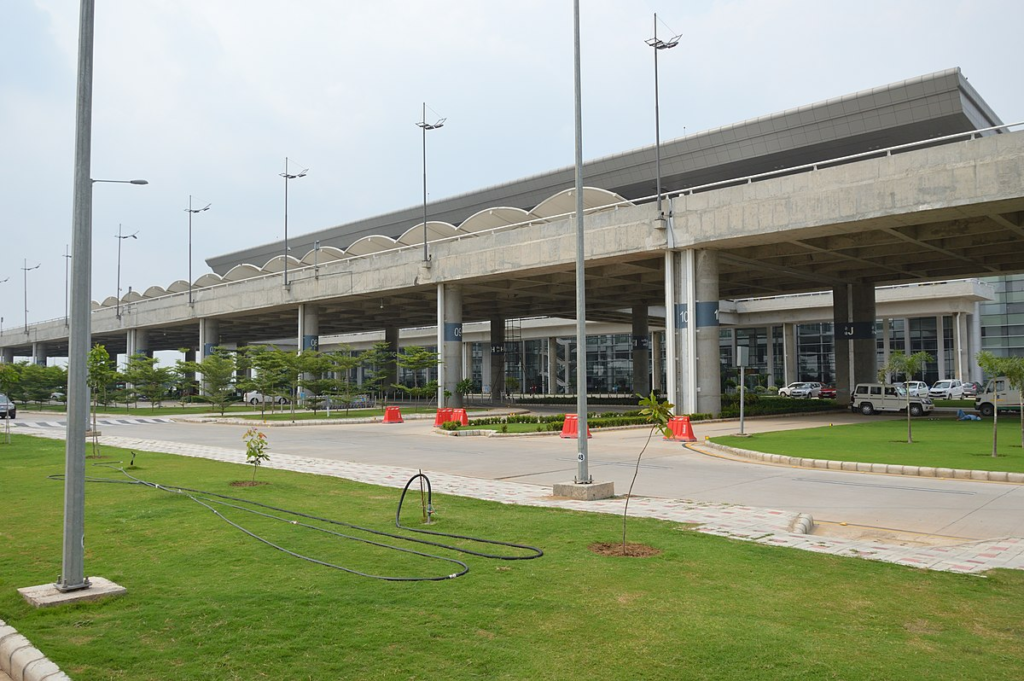
International flights from Chandigarh are available to destinations such as Dubai and Sharjah, expanding the city’s global connectivity. The Airports Authority of India holds a majority stake (51%) in the international terminal, with the governments of Punjab and Haryana each holding a 24.5% stake. This partnership underscores the region’s investment in improving international air travel infrastructure.
Rail Transport: Accessibility Across India
The Chandigarh Junction Railway Station, situated in the Northern Railway Zone of Indian Railways, is another crucial mode of transport in the city. The station connects Chandigarh to most parts of India, making it a major transit point for both passengers and freight. The station also serves the neighboring town of Panchkula, further enhancing the city’s regional connectivity.
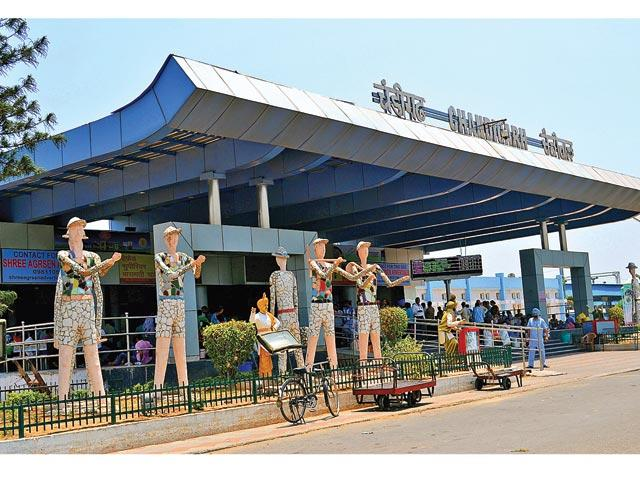
Although there have been long-standing proposals to develop a metro rail system in Chandigarh, the project was scrapped in 2017 due to feasibility concerns. Nevertheless, the existing rail and road networks continue to support the city’s transportation requirements effectively.
A City with Modern and Expanding Transport Networks
Chandigarh has developed a robust and efficient transportation system that caters to the needs of its residents and visitors. From its well-maintained road network and extensive bus services to its growing international airport and railway connectivity, the city offers a range of travel options that ensure smooth and hassle-free commutes. The establishment of the Unified Transport Metropolitan Authority and other infrastructure projects reflects the city’s commitment to improving its transport systems in line with its growing population and urban development.
Education in Chandigarh: A Hub for Academic Excellence
Chandigarh, known for its well-planned infrastructure and modern amenities, also boasts a thriving education sector that attracts students from all over India and even abroad. The city is home to a wide array of educational institutions, ranging from schools to colleges, and is recognized as a hub for higher education and professional training.
Higher Education Institutions
Chandigarh hosts several prestigious higher education institutions that offer a broad spectrum of academic programs. Notable among them are:
- Panjab University: A renowned institution offering undergraduate, postgraduate, and doctoral programs in various disciplines, including arts, sciences, commerce, and engineering. Panjab University is one of the oldest and most respected universities in India.
- Post Graduate Institute of Medical Education and Research (PGIMER): PGIMER is a prominent medical institution offering world-class education and healthcare services. It is one of the leading centers for medical research and medical education in India.
- Punjab Engineering College (PEC): Known for its excellent engineering programs, PEC is among the top engineering colleges in the country, attracting students from all over India.
- Indian Institute of Science Education and Research (IISER): A premier institute focused on research and education in the fields of science and engineering, IISER is one of the leading institutions for science education in India.
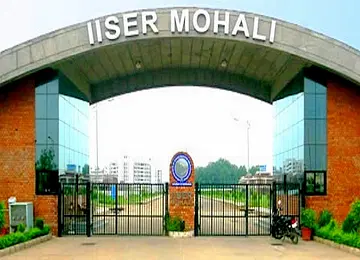
- National Institute of Technical Teacher Training and Research (NITTTR): NITTTR provides specialized training to technical educators, contributing to the growth of technical education in India.
These institutions, along with several others, have earned Chandigarh a reputation as a major educational hub, offering high-quality academic programs and research opportunities.
Schools in Chandigarh: A Blend of Public and Private Institutions
Chandigarh offers a diverse range of schooling options, from public to private institutions, ensuring quality education for students at all levels. The city has 115 government schools under the Chandigarh administration’s department of education, with prominent schools like:
- Government Model Senior Secondary School, Sector 16
- Jawahar Navodaya Vidyalaya: Known for its focus on all-around student development.
In addition, private and convent schools are highly regarded, including:
- St. Anne’s Convent School
- St. John’s High School
- Sacred Heart Senior Secondary School
- Carmel Convent School
- Delhi Public School
- D.A.V. Public School
These schools offer a mix of curricula, such as CBSE, ICSE, and state boards, and cater to different needs and preferences of parents and students.
Chandigarh as a Hub for IAS Coaching
Chandigarh has emerged as a prominent center for IAS coaching in North India. The city’s reputation for quality education and conducive living conditions has made it a preferred destination for aspirants preparing for the Union Public Service Commission (UPSC) exams. Over the years, the city has seen a surge in coaching institutes dedicated to civil services preparation, attracting students from nearby states like Himachal Pradesh, Haryana, Punjab, and Jammu & Kashmir.
The availability of excellent coaching facilities, combined with a peaceful environment, good quality of life, and access to a range of educational resources, has led many students to choose Chandigarh over Delhi for their IAS preparation. Coaching institutes in Chandigarh provide expert guidance, study material, and mock tests to help aspirants crack the competitive exams. O2 IAS Academy is one of the institutes contributing to the city’s growing prominence as a destination for UPSC coaching.
Sports in Chandigarh
Chandigarh is not just known for its urban planning and educational institutions but also for its vibrant sports culture. The city has a strong sporting heritage, with world-class facilities for various sports like cricket, hockey, golf, and more. Its sports infrastructure supports both professional athletes and amateurs, making it a popular destination for sporting events.
Chandigarh Hockey Stadium
The Chandigarh Hockey Stadium in Sector 42 is a key facility for the sport of hockey in the city. It has been a venue for national and international competitions, promoting the growth of hockey in the region. As a significant venue for hockey matches, it continues to contribute to the development of the sport, with local players regularly using the stadium for practice and competitions.
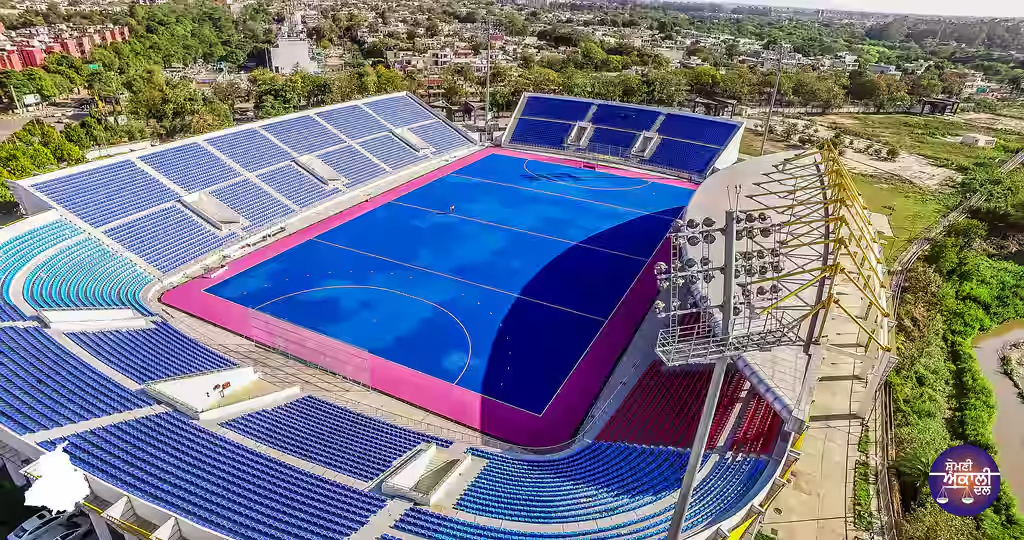
Cricket and Sector 16 Stadium
The Sector 16 Stadium has held many international cricket matches over the years, serving as an important venue for cricket enthusiasts in the region. Though its prominence has diminished with the establishment of the PCA Stadium in Mohali, the Sector 16 Stadium still holds its place as a venue for inter-state cricket matches and a hub for local cricketers to practice and play.
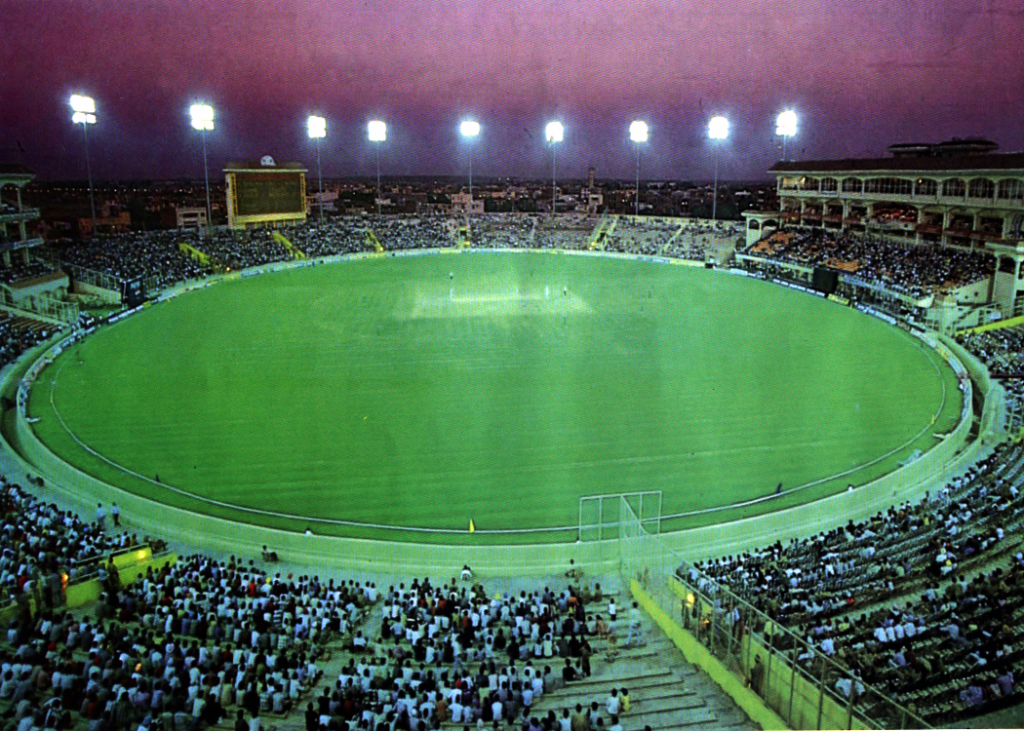
Chandigarh Golf Club
Chandigarh also offers excellent facilities for golf, with the Chandigarh Golf Club hosting a challenging 7,202-yard, 18-hole course. Known for its narrow fairways, difficult dogleg 7th hole, and floodlit first nine holes, the course provides an exhilarating experience for golf enthusiasts. The club is a popular destination for both seasoned players and beginners looking to enjoy the sport in a scenic setting.
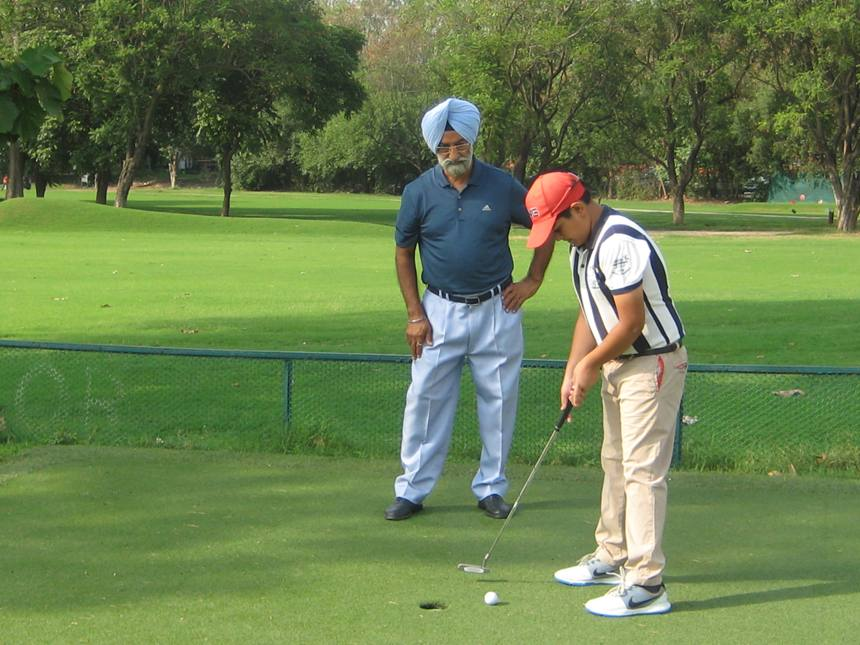
Tourist Attractions in Chandigarh
Chandigarh’s allure isn’t just limited to its educational institutions and sports facilities. The city also boasts an array of tourist attractions, offering a blend of natural beauty, historical significance, and architectural marvels. Here’s a look at some of the must-visit places in Chandigarh:
Natural Landscapes
- Rock Garden of Chandigarh: A unique garden made entirely of recycled materials, the Rock Garden is an iconic landmark that showcases creativity and innovation.
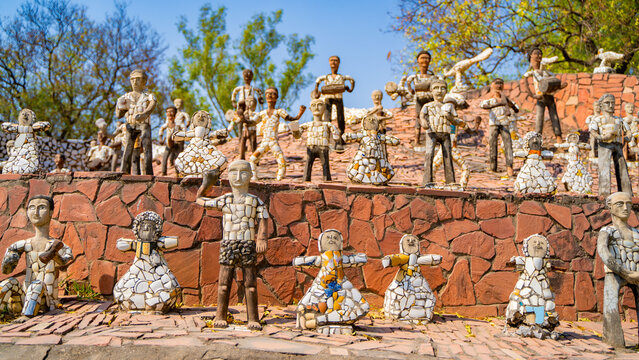
- Zakir Hussain Rose Garden: This lush garden is home to thousands of rose varieties and is a popular destination, especially during the annual Rose Festival.
- Japanese Garden: A tranquil garden with beautiful Japanese landscaping, it offers a peaceful retreat for visitors.
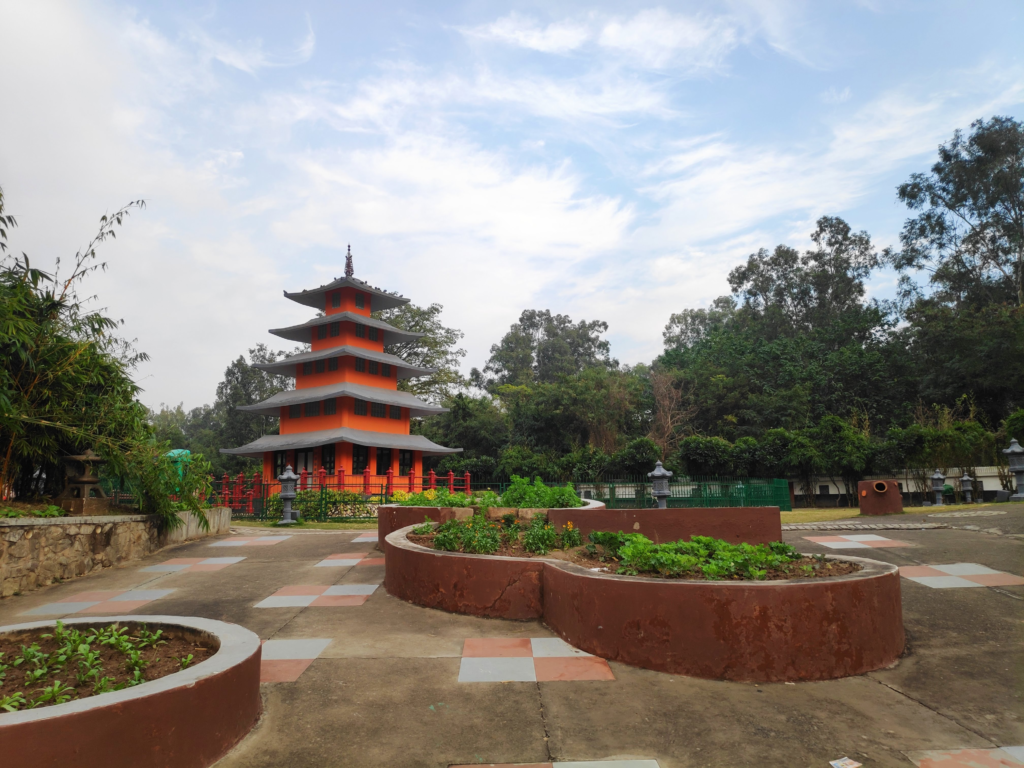
- Sukhna Lake: A man-made lake offering boating and scenic views, Sukhna Lake is a prime spot for relaxation and recreation.
- Sukhna Wildlife Sanctuary: A serene sanctuary for nature lovers, home to a variety of wildlife, including migratory birds.
- Mahendra Chaudhary Zoological Park: A well-maintained zoo housing various species of animals and birds.
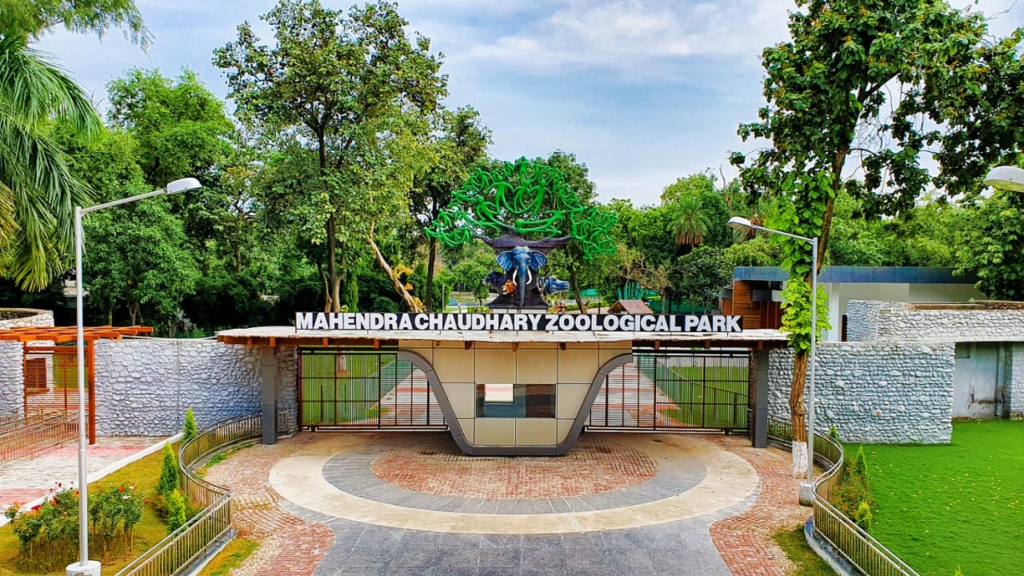
- Garden of Springs: A lush green space known for its serene atmosphere, perfect for morning walks and relaxation.
Museums and Cultural Landmarks
- Government Museum and Art Gallery: This museum houses collections of contemporary art, sculptures, and artifacts, making it a cultural treasure trove.
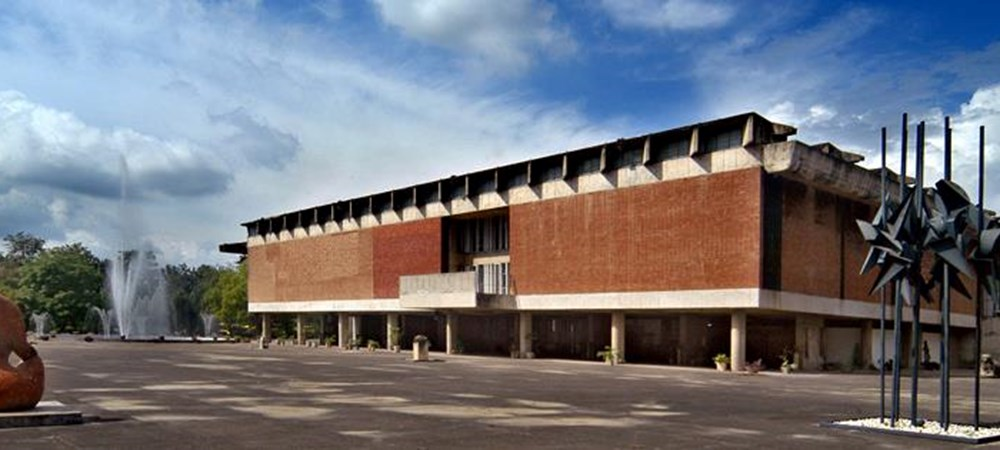
- Gandhi Bhawan: A tribute to Mahatma Gandhi, this building holds a museum and an auditorium, where cultural events are organized.
- Open Hand Monument: A symbol of peace and the city’s architecture, the Open Hand Monument is one of Chandigarh’s most recognized landmarks.
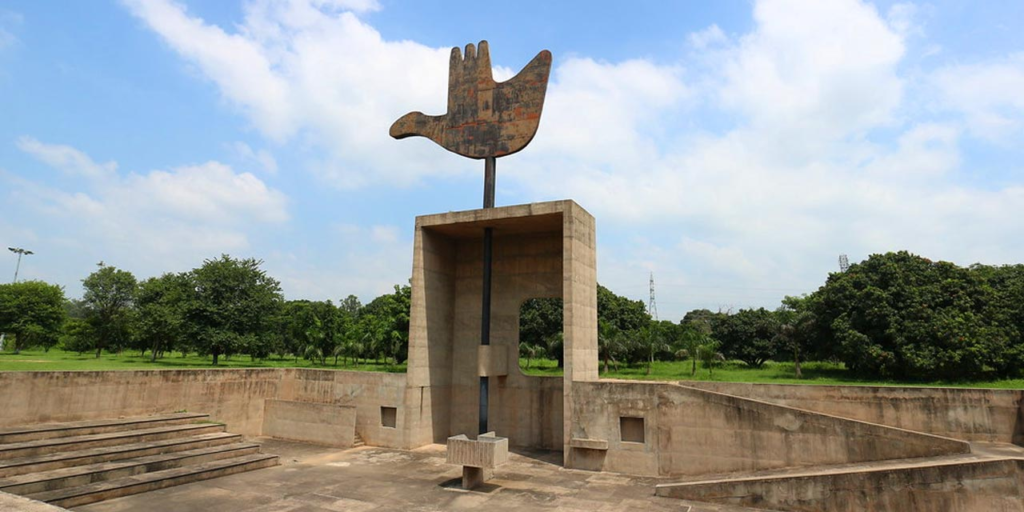
Architectural Marvels
- Palace of Assembly: A stunning example of modernist architecture designed by Pierre Jeanneret and Le Corbusier, this building serves as the legislative assembly for the state of Punjab.
- Chandigarh Capitol Complex: A UNESCO World Heritage Site, the Capitol Complex is a masterpiece of architecture, featuring important government buildings like the Secretariat Building.
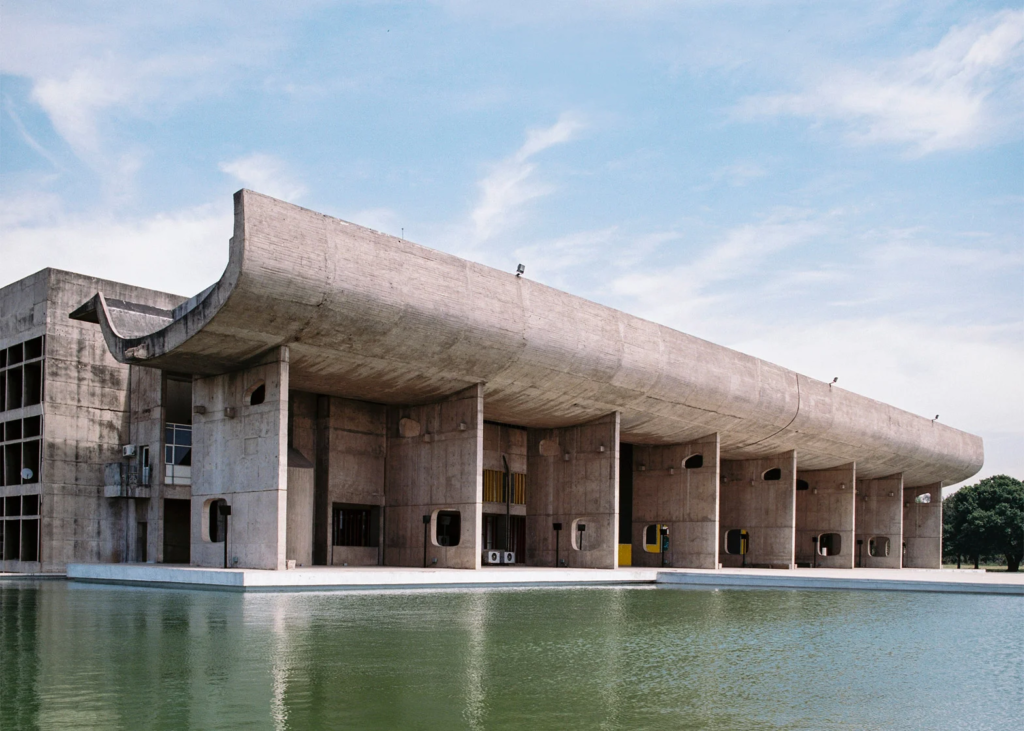
Other Attractions
- Sector-17: A bustling commercial center known for shopping, dining, and entertainment.
- Burail Fort: A historical fort located near Burail Village, offering insight into the region’s past.
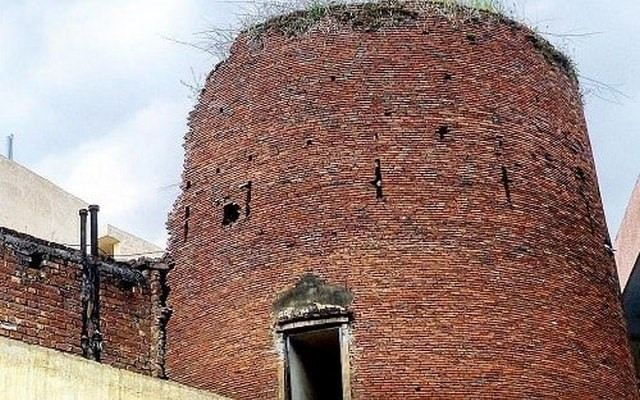
- Manimajra Fort: A lesser-known fort that adds historical depth to the city’s landscape.
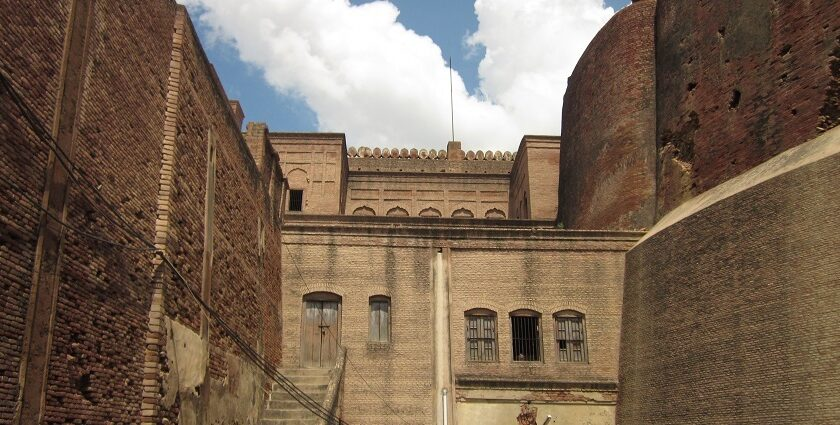
- Chandi Mandir: A revered temple dedicated to Goddess Chandi, located near the city.
- Elante Mall: A popular shopping destination, offering a wide range of global and local brands.
- Paras Downtown Square: Another bustling commercial hub with shopping, dining, and entertainment options.
- Tagore Theatre: A venue for cultural events, plays, and performances, contributing to Chandigarh’s artistic scene.
Chandigarh, with its perfect blend of nature, culture, and modern architecture, is an ideal destination for tourists seeking both relaxation and enrichment. Whether it’s enjoying a day at Sukhna Lake, exploring the Rock Garden, or experiencing the architectural wonders, the city offers a diverse range of attractions to cater to all interests.

